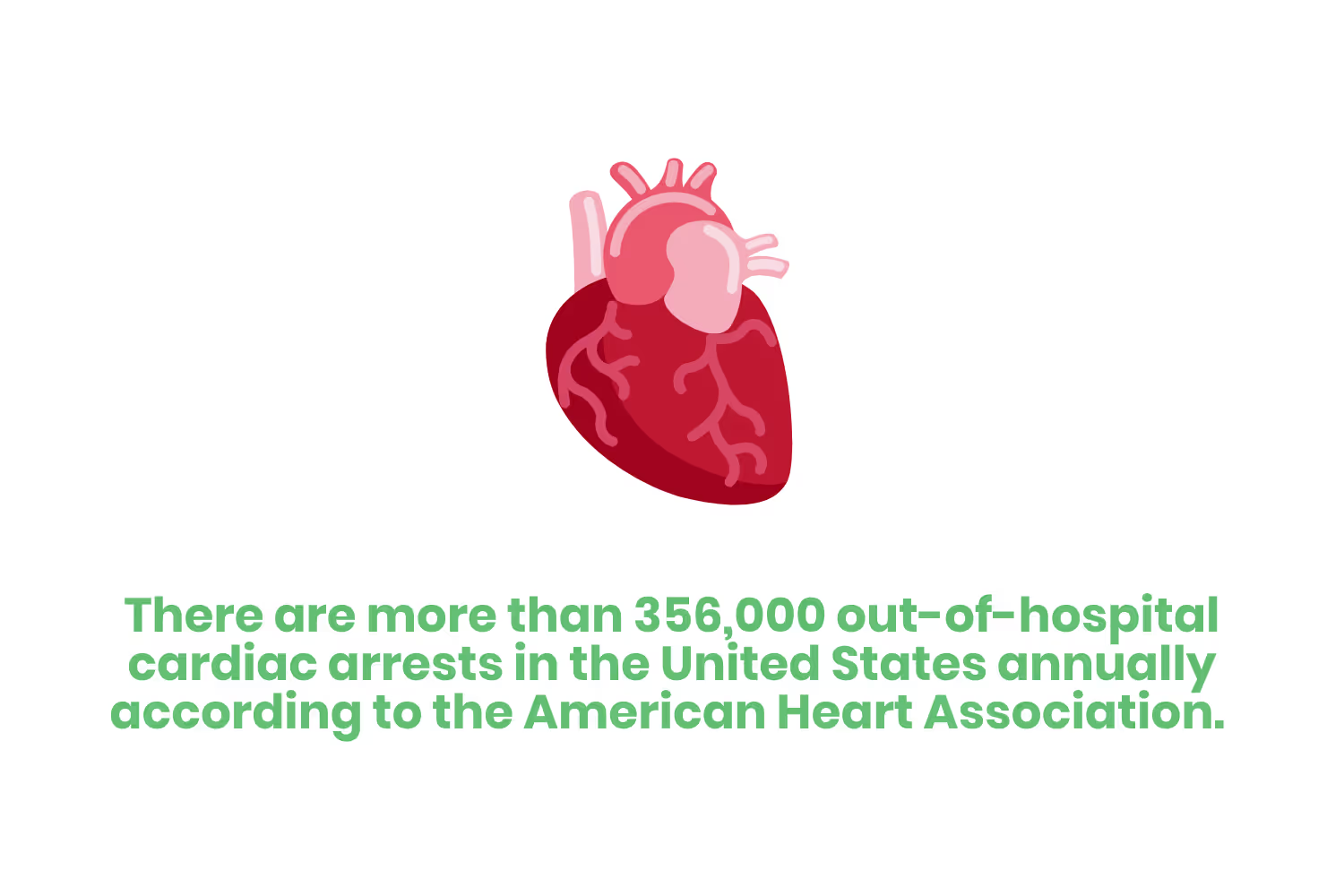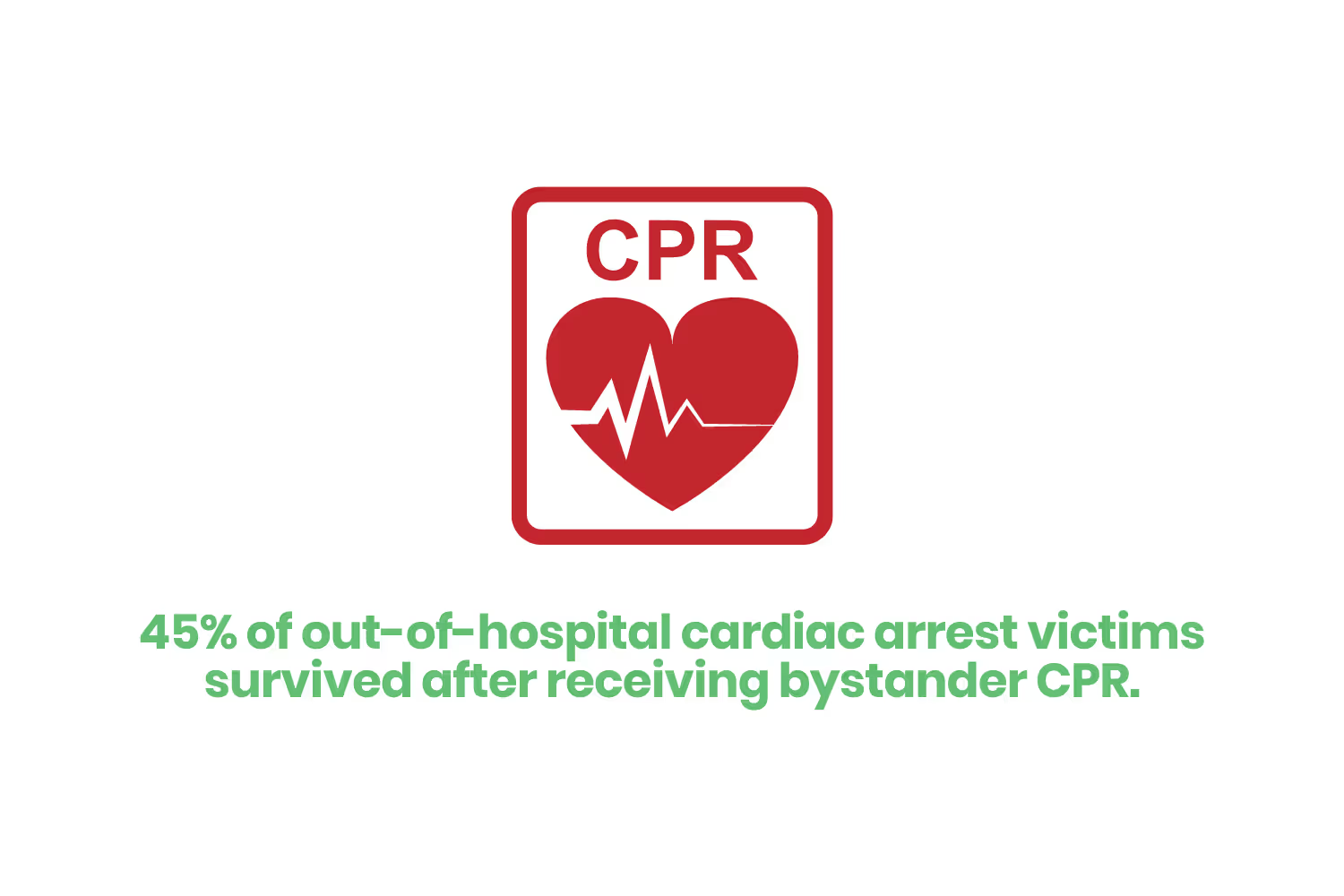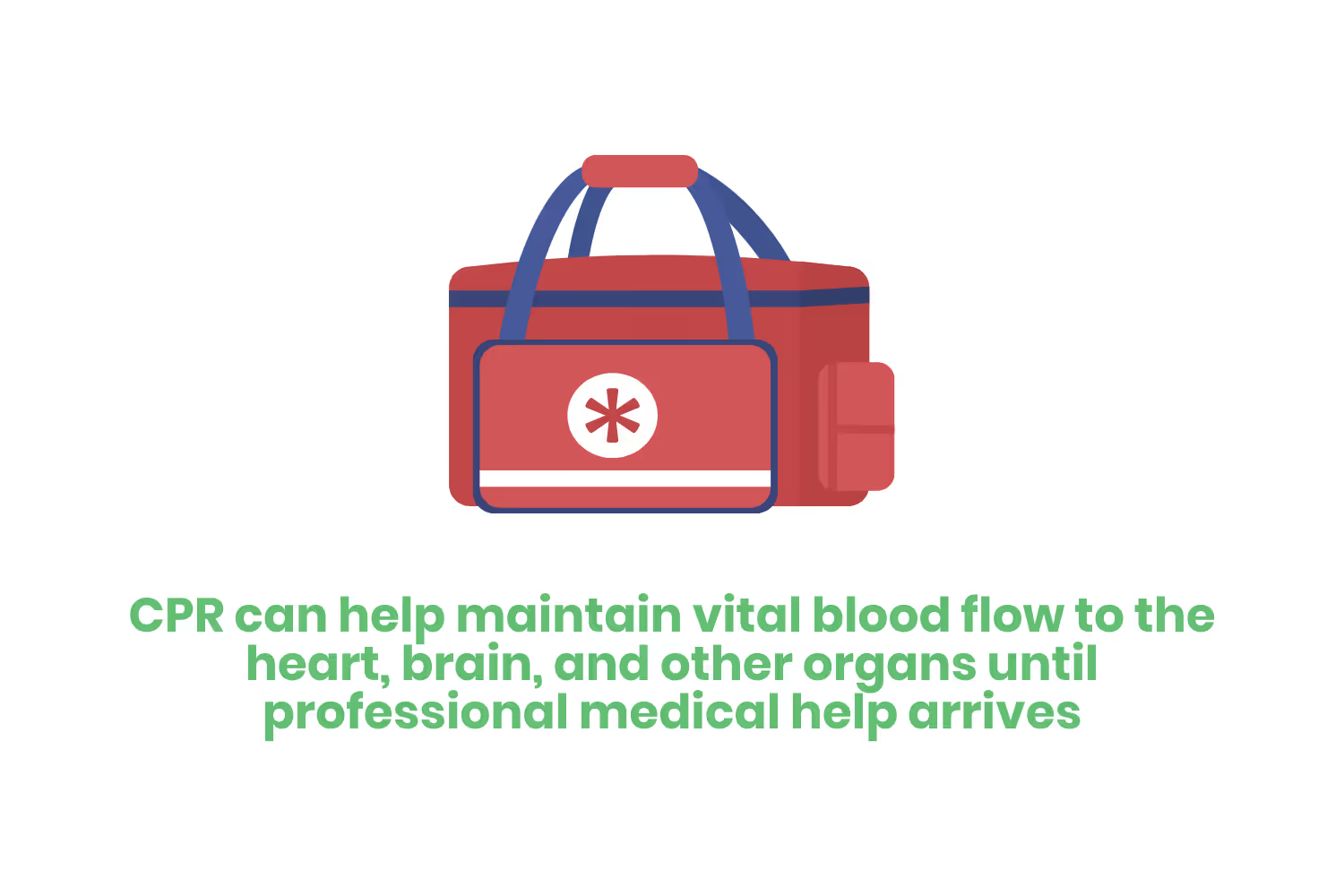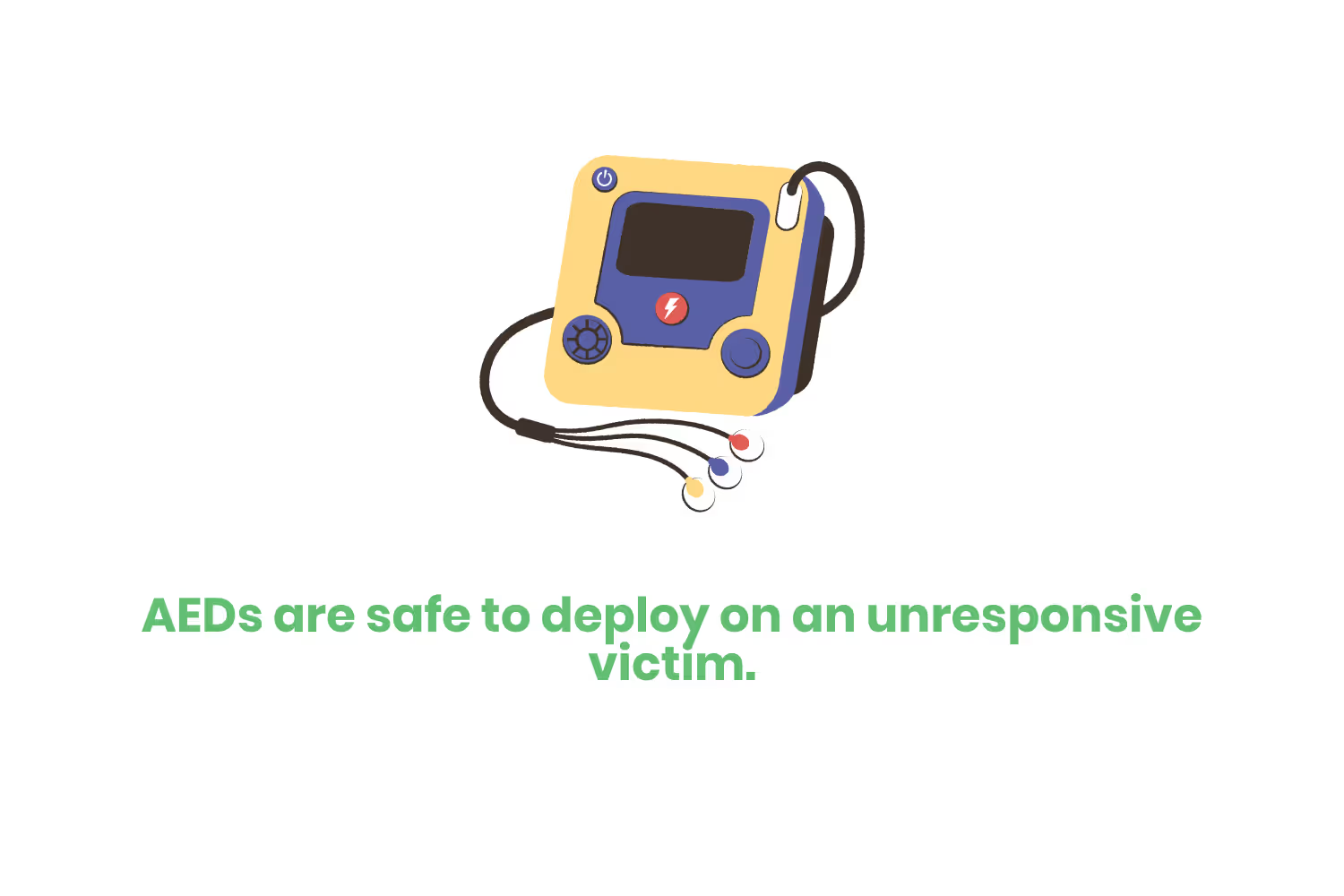Answered: What is Basic Life Support?
To react to a medical emergency, people need to know what to do. They also need to understand what basic life support is to administer it. So what is basic life support? What does it entail and why is it important? Let’s dive in.

There are more than 356,000 out-of-hospital cardiac arrests in the United States annually according to the American Heart Association.
That means there are thousands of people every year who need emergency lifesaving services. It also means thousands of people rely on bystanders to call 911, get them an ambulance, and help them stay alive until medical professionals arrive.

Unfortunately, 90% of cardiac arrests are fatal. A medical emergency can happen anywhere, at any time. This is why it’s so important for society to learn how to react to these situations.
To react to a medical emergency, people need to know what to do. They also need to understand what basic life support is to administer it.
So what is basic life support? What does it entail and why is it important? Let’s dive in.
What is Basic Life Support (BLS)?
According to the American Red Cross, Basic Life Support (BLS) is a set of emergency procedures to keep someone alive when they experience a medical emergency. It refers to the type of care provided to anyone experiencing cardiac arrest, respiratory distress, or an obstructed airway.

First responders, healthcare providers, and public safety professionals are the ones who provide this type of care. Bystanders can also provide this type of care until someone can obtain advanced medical care.
BLS requires knowledge and skills in cardiopulmonary resuscitation, also known as CPR. It also requires knowledge of using automated external defibrillators (AED) and relieving airway obstruction in patients of any age.
What is the importance of knowing BLS?
Using an AED or performing CPR are essential procedures. They help sustain someone’s life until professional medical help can arrive. BLS skills can mean the difference between life and death. Knowing BLS can give you the ability to take action and potentially save a life.
For example, think of TV shows that feature police officers, 911 dispatch, or hospital workers. In the 911 calls featured in these fictitious situations, the person answering the 911 call usually asks if the injured person is breathing. If the caller responds “no”, then the dispatcher will guide the caller in performing CPR. These 911 dispatchers may also guide someone in performing the Heimlich maneuver to help remove an airway obstruction or what to do if someone is bleeding profusely.
The point is, BLS activities can mean the difference between life and death. It helps buy time until medical professionals arrive on the scene or an ambulance comes. In fact, 45% of out-of-hospital cardiac arrest victims survived after receiving bystander CPR.

Activiating the Chain of Survival for Basic Cardiac Life Support
If you witness someone who may be experiencing sudden cardiac arrest, you should employ something called “the chain of survival”. The chain of survival has six crucial actions that can help increase a victim’s chance of surviving their medical emergency.
The following information is in accordance with the 2020 American Heart Association (AHA) Guidelines for CPR and Emergency Cardiovascular Care.
A bystander should perform the first three steps of the chain of survival right away:
- Recognize the emergency. Activate the emergency response system. If you witness someone suddenly collapsing followed by a loss of consciousness, call 911 immediately and begin the BLS process. Ask another bystander to find a nearby AED.
- Immediately begin performing CPR. Begin chest compressions at a rate of 100–120 compressions per minute and at a depth of 2–2.4 inches.
- Provide rapid defibrillation. When the AED arrives, attach the pads to the victim's bare chest, turn the device on, and follow the prompts. If needed, the AED will administer a shock.

A medical professional needs to perform the final three steps of the chain of survival. These three steps are…
- Initiate advanced life support
- Provide post-cardiac arrest care
- Provide long-term recovery support
The 5 Steps of a BLS Assessment
In moments of medical emergencies, Basic Life Support (BLS) plays a critical role in providing immediate care to individuals in need. Whether you are a healthcare professional, a first responder, or someone who wants to learn how to assist in times of crisis, understanding the five essential steps of a BLS assessment can be invaluable.
By following a structured approach, you can assess the situation, make quick decisions, and administer life-saving techniques until advanced medical help arrives.
Let's explore the key components that form the foundation of every BLS assessment, ensuring you are well-prepared to make a difference in emergency situations.
Step 1: Assess Scene Safety Before Performing CPR
It’s essential to evaluate the area for potential dangers before starting CPR. Things like debris, shrapnel, or hazardous materials could further hurt the patient. Ensuring scene safety before starting CPR will prevent injuries. You need to keep yourself, the patient, and any bystanders safe.
Step 2: Check The Patient's Airway, Breathing and Circulation
The next step is to assess the patient’s airway, breathing, and circulation. Check for any signs of breathing or a pulse. If the patient isn’t breathing or has no pulse, start CPR immediately.
Step 3: Call for Professional Help
It’s crucial to activate the emergency medical services (EMS) system as soon as possible. You need to ensure that professional help arrives on the scene. Call the emergency number in your area. Then, follow the instructions provided by the dispatcher.
Step 4: Use an AED if available and follow its instructions
If an AED is available, use it as soon as possible. AEDs are user-friendly. They provide voice prompts and visual cues to guide you through the process. Follow the AED’s instructions carefully and promptly. This helps ensure the best chance of a successful outcome.
Step 5: Perform CPR
Chest compressions are an essential part of CPR. They help circulate blood to the brain and other vital organs.
When performing chest compressions, ensure that the patient is lying on their back on a firm surface. Place your hands on their chest and press down about two inches at a rate of 100-120 compressions per minute. After 30 compressions, give two rescue breaths and repeat the cycle.
Follow the proper speed and cadence to increase the chances of a successful outcome.
How is CPR involved in BLS?
CPR is a critical part of basic life support. Anyone trained in its proper technique can perform it.
Perform CPR immediately if the person is unresponsive, not breathing, or has no pulse.
CPR can help maintain vital blood flow to the heart, brain, and other organs until professional medical help arrives.

Step-by-step guide on performing CPR:
- Check for responsiveness and call for help.
- Open the airway and check for breathing.
- If the person is not breathing, begin CPR.
- Place your hands in the center of the person’s chest and begin compressions.
- Perform compressions at a rate of 100-120 per minute, allowing the chest to fully recoil between compressions.
- If you have training in CPR, provide rescue breaths.
- Continue CPR until the person starts to breathe or help arrives.
When to Use an AED
AEDs are safe to deploy on an unresponsive victim. It’s designed to analyze the heart’s rhythm and deliver a shock to restore a normal heartbeat. The device will not shock a victim or a responder.
Step-by-step guide on using an AED:
- Turn on the AED and follow the voice or visual prompts.
- Remove any clothing or jewelry that may interfere with the AED pads.
- Attach the AED pads to the person’s bare chest as shown in the diagram on the AED.
- Make sure that no one is touching the person, and press the analyze button.
- If the AED advises a shock, ensure that no one is touching the person, and press the shock button.
- After the shock, perform CPR if the person is still not breathing
AED tips and precautions:
- Always make sure the person is dry before applying the AED pads.
- If the person has a pacemaker or defibrillator implanted, avoid placing the AED pads directly over the device.
- Remember to stay calm and focused, and follow the instructions on the AED precisely.

Events That May Require BLS
- Cardiac arrest
- This is the most common situation that requires BLS.
- It is a sudden loss of heart function and can occur due to a variety of reasons such as heart attack, drowning, electric shock, and more.
- Choking
- When food, objects, or other materials obstructs a person's airways, it can cause them to choke, and the person may stop breathing.
- BLS can help remove the obstruction and restart their breathing.
- Suffocation
- Suffocation can occur from smoke inhalation, gas leaks, or getting trapped in small spaces.
- BLS can help restart their breathing and sustain their life until professional medical help arrives.
- Drowning
- When someone becomes submerged in water, they may not be able to breathe, and their heart may stop beating.
- BLS can help restart their breathing and revive them.
- Severe allergic reactions
- Anaphylaxis is a severe allergic reaction that can cause a person’s airway to become blocked and their heart to stop beating.
- BLS can help open their airway and sustain their life until professional medical help arrives.
- Drug overdose
- When someone takes too much medication or drugs, it can cause them to stop breathing, and their heart may stop beating.
- BLS can help restart their breathing and sustain their life until professional medical help arrives.
- Trauma
- When someone experiences a severe injury or trauma, it can cause them to stop breathing or their heart to stop beating.
- BLS can help restart their breathing and sustain their life until professional medical help arrives.
Conclusion
It's not possible to avoid all medical emergency situations. Things happen after all. But knowing how to handle these situations can mean the difference between life and death for the person you are helping.
Now that you understand what basic life support is and why it is important, the next step is to look for training. The more information you have to help someone in a medical emergency, the more likely they are to survive.
With proper knowledge and training, you can save someone’s life.
Emphasize your product's unique features or benefits to differentiate it from competitors
In nec dictum adipiscing pharetra enim etiam scelerisque dolor purus ipsum egestas cursus vulputate arcu egestas ut eu sed mollis consectetur mattis pharetra curabitur et maecenas in mattis fames consectetur ipsum quis risus mauris aliquam ornare nisl purus at ipsum nulla accumsan consectetur vestibulum suspendisse aliquam condimentum scelerisque lacinia pellentesque vestibulum condimentum turpis ligula pharetra dictum sapien facilisis sapien at sagittis et cursus congue.
- Pharetra curabitur et maecenas in mattis fames consectetur ipsum quis risus.
- Justo urna nisi auctor consequat consectetur dolor lectus blandit.
- Eget egestas volutpat lacinia vestibulum vitae mattis hendrerit.
- Ornare elit odio tellus orci bibendum dictum id sem congue enim amet diam.
Incorporate statistics or specific numbers to highlight the effectiveness or popularity of your offering
Convallis pellentesque ullamcorper sapien sed tristique fermentum proin amet quam tincidunt feugiat vitae neque quisque odio ut pellentesque ac mauris eget lectus. Pretium arcu turpis lacus sapien sit at eu sapien duis magna nunc nibh nam non ut nibh ultrices ultrices elementum egestas enim nisl sed cursus pellentesque sit dignissim enim euismod sit et convallis sed pelis viverra quam at nisl sit pharetra enim nisl nec vestibulum posuere in volutpat sed blandit neque risus.

Use time-sensitive language to encourage immediate action, such as "Limited Time Offer
Feugiat vitae neque quisque odio ut pellentesque ac mauris eget lectus. Pretium arcu turpis lacus sapien sit at eu sapien duis magna nunc nibh nam non ut nibh ultrices ultrices elementum egestas enim nisl sed cursus pellentesque sit dignissim enim euismod sit et convallis sed pelis viverra quam at nisl sit pharetra enim nisl nec vestibulum posuere in volutpat sed blandit neque risus.
- Pharetra curabitur et maecenas in mattis fames consectetur ipsum quis risus.
- Justo urna nisi auctor consequat consectetur dolor lectus blandit.
- Eget egestas volutpat lacinia vestibulum vitae mattis hendrerit.
- Ornare elit odio tellus orci bibendum dictum id sem congue enim amet diam.
Address customer pain points directly by showing how your product solves their problems
Feugiat vitae neque quisque odio ut pellentesque ac mauris eget lectus. Pretium arcu turpis lacus sapien sit at eu sapien duis magna nunc nibh nam non ut nibh ultrices ultrices elementum egestas enim nisl sed cursus pellentesque sit dignissim enim euismod sit et convallis sed pelis viverra quam at nisl sit pharetra enim nisl nec vestibulum posuere in volutpat sed blandit neque risus.
Vel etiam vel amet aenean eget in habitasse nunc duis tellus sem turpis risus aliquam ac volutpat tellus eu faucibus ullamcorper.
Tailor titles to your ideal customer segment using phrases like "Designed for Busy Professionals
Sed pretium id nibh id sit felis vitae volutpat volutpat adipiscing at sodales neque lectus mi phasellus commodo at elit suspendisse ornare faucibus lectus purus viverra in nec aliquet commodo et sed sed nisi tempor mi pellentesque arcu viverra pretium duis enim vulputate dignissim etiam ultrices vitae neque urna proin nibh diam turpis augue lacus.




